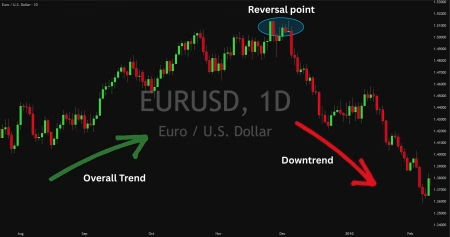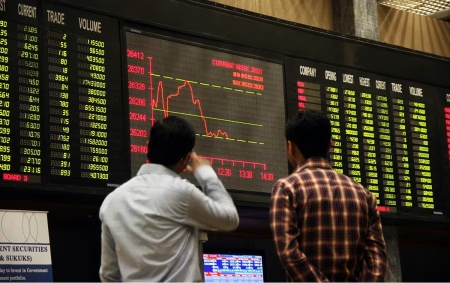As a seasoned trader, I’ve seen how candlestick patterns change the game. They help us understand market mood and trends. This guide is perfect for anyone new to technical analysis or looking to improve their skills.
Candlestick charts are like X-ray vision for the financial markets. They show price movements clearly over time. Each candlestick shares the open, high, low, and close prices for a period. Learning these patterns helps you spot reversals, trends, and key support/resistance levels.
Key Takeaways
- Candlestick patterns offer visual cues to understand market sentiment and momentum
- Mastering candlestick analysis can boost your trading confidence and success
- Candlestick charts display four key pieces of information: open, high, low, and close prices
- The shape and color of candlesticks provide insights into bullish or bearish market conditions
- Recognizing and interpreting candlestick patterns is a crucial skill for informed trading decisions
In this guide, we’ll cover the basics of candlestick patterns. We’ll look at both reversal and continuation patterns. You’ll learn how to use this knowledge in real trading situations. This guide is for both seasoned traders and newcomers, aiming to improve your trading skills.
Introduction to Candlestick Patterns
Understanding the Significance of Candlestick Charts
Candlestick charts show price movements over time. They help traders understand market sentiment easily. Each candlestick has four key pieces of information: the opening and closing prices, and the highest and lowest prices.
These details help form different candle patterns. These patterns can signal when the market might go up or down.
Candlestick charts are simple and useful for traders. They work with many types of assets, like stocks and cryptocurrencies. By learning these patterns, traders can spot good opportunities and guess future price movements.
Breakdown of Candlestick Components
Candlestick charts have been around for centuries, starting with Japanese rice merchants. Each candlestick shows the open, high, low, and close of a security in a certain time frame. Many traders like candlestick charts better than bar charts for seeing price changes.
- Long white/green candlesticks show strong bullish buying.
- Long black/red candlesticks show big bearish selling.
- Marubozu bars, with no shadows, show strong control by buyers or sellers.
- Spinning tops, with long shadows and a small body, show market indecision.
Knowing the parts of a candlestick is key to using candlestick analysis. It helps identify market trends or changes.

Foundational Single Candlestick Patterns
The doji, hammer, and shooting star are basic yet key candlestick patterns. They help traders understand market sentiment and future trends. This makes them crucial for those looking to profit from trend changes.
Doji: Indecision and Potential Reversal
The doji pattern shows when the market is unsure. It has an opening and closing price that are almost the same. This “cross” shape means the market is indecisive.
Depending on its place in a trend, a doji can hint at a change. If it shows up at the end of a trend, it might signal a shift in market mood. This could lead to a reversal soon.
Hammer: Bullish Reversal Signal
The hammer pattern is a sign of a possible upturn after a downtrend. It has a small body and a long lower wick. This shows buyers fought to push the price back up.
The hammer suggests the selling pressure has ended. Now, the market might start to move up again.
| Candlestick Pattern | Description | Bullish/Bearish |
|---|---|---|
| Doji | Opening and closing prices are nearly identical, forming a “cross” that signifies indecision. | Neutral, can signal potential reversal |
| Hammer | Small body with a long lower wick, indicating buyers stepped in to push the price back up. | Bullish reversal signal |
| Shooting Star | Long upper wick with a small body, suggesting sellers overwhelmed buyers during the session. | Bearish reversal signal |
The shooting star pattern is a bearish sign that appears after an uptrend. It has a long upper wick and a small body. This shows the price went up but then fell back, indicating sellers won.

Understanding these basic candlestick patterns is vital for traders. They offer insights into market mood and potential trend shifts. By learning to read these patterns, traders can make better choices and seize market chances.
Candlestick Reversal Patterns
In trading, smart investors look for complex patterns to predict market changes. They focus on the engulfing pattern and the evening star. These patterns help spot when the market might turn around.
The engulfing pattern happens when a small candlestick is followed by a big one that covers it. This can signal a big change. A bullish engulfing pattern after a drop means the market might go up. A bearish one at the top of a rise suggests it might fall.
The evening star pattern has three parts: a big bullish candle, a small one, and a big bearish one. It shows an uptrend might be losing steam, hinting at a fall.
The 3 red candles (or 3 black crowns) pattern is three long bearish candles in a row. It shows strong selling and might mean the market will keep falling.
| Pattern | Description | Interpretation |
|---|---|---|
| Engulfing Pattern | A smaller candlestick is followed by a larger one that “engulfs” it. | Bullish engulfing pattern after a downtrend suggests an upward reversal. Bearish engulfing pattern at the top of an uptrend indicates a reversal downward. |
| Evening Star | A large bullish candle, a small indecisive candle, and a large bearish candle. | Signals the loss of momentum in an uptrend, hinting at a bearish reversal. |
| 3 Red Candles (3 Black Crowns) | Three consecutive long bearish candlesticks. | Indicates strong selling pressure and the potential continuation of a downtrend. |
Knowing these reversal patterns can give traders a big advantage. They can predict market changes and make better trades. Adding these patterns to your analysis can change how you trade, making you more confident and successful.
“Mastering candlestick reversal patterns is like holding the key to unlock the market’s secrets. With the right knowledge and timing, you can position yourself to capitalize on these pivotal moments of market sentiment shifts.”
Continuation Patterns and Bullish Signals
In the world of candlestick analysis, continuation patterns are key. They help spot when a trend might keep going. The Rising Three Methods is a notable bullish pattern. It happens when a big bullish candle is followed by three smaller ones, then another big one.
This pattern shows the uptrend is likely to keep going. It helps traders know when to buy or sell. It means the bulls are strong, and people still want the asset.
Rising Three Methods: Bullish Continuation Pattern
The Rising Three Methods pattern has a few important parts:
- A long bullish candle starts the uptrend
- Three smaller candles that keep the gains
- A final big bullish candle confirms the trend
This pattern shows the bulls are in charge. It helps traders catch the chance to make money from the trend.
“The Rising Three Methods pattern is a powerful tool in the candlestick analyst’s arsenal, providing a reliable signal for the continuation of a bullish trend.”
It’s important to use this pattern with other tools and strategies. Knowing the Rising Three Methods well can help traders find good trades. It’s all about understanding the market and making smart choices.
Continuation Patterns and Bearish Signals
Bullish continuation patterns show an uptrend is likely to keep going. But, bearish patterns hint at a downtrend’s continuation. The Falling Three Methods is a bearish pattern traders need to watch.
Falling Three Methods: Bearish Continuation Pattern
The Falling Three Methods pattern has a long bearish candle followed by three smaller candles. Then, another long bearish candle comes. This pattern shows the downtrend is strong and might keep going.
It’s a strong sign that bears control the market. The selling pressure is strong, and bulls are finding it hard to push back. Traders can use this pattern to time their trades well.
When looking at the Falling Three Methods, consider the market’s overall state. It works best in clear downtrends. In choppy markets, it may send mixed signals, so traders should be careful.
Understanding the Falling Three Methods and other bearish continuation patterns helps traders make better choices. Remember, continuation patterns are key to spotting trends, whether they’re up or down.
Candlestick Patterns in Action
Learning about candlestick patterns is key, but using them in trading is where the real skill is. Traders need to understand these patterns with other market data like volume and trend direction. This helps them make smart choices.
By looking at real-world examples and case studies, traders learn how these patterns work in different market conditions. They discover the best times to buy or sell.
Real-World Examples and Case Studies
A leading tech stock recently showed how candlestick patterns work. The stock was going up, but then bearish engulfing patterns appeared. This signaled a possible change in trend. Traders who saw this pattern sold their stocks and made money when the price went down.
Another example is a commodity that had been stuck in a range for weeks. A bullish hammer pattern at the low end of the range told traders it was time to buy. And indeed, the price went up, making those who bought it happy.
“Candlestick patterns are not just ideas; they are real in the market, giving traders valuable clues.”
By studying these examples, traders get a better grasp of candlestick patterns in different market conditions. This knowledge helps them make better trading decisions.
Mastering the Art of Candlestick Analysis
Candlestick analysis is a key tool in technical analysis and trading strategy. It helps traders understand market sentiment and predict price changes. By learning to read candlestick patterns, traders can see the market’s mood and guess future moves.
Candlestick patterns show the fight between buyers and sellers. They give insights into market psychology. From simple Doji and Hammer candles to complex patterns, each has its own meaning in candlestick analysis.
It’s important to know the context of candlestick patterns. Traders need to link these patterns with other indicators like support levels and trendlines. This way, they can make more reliable trading decisions and build a solid trading strategy.
Good risk management is key when using candlestick analysis. This means setting stop-loss levels, controlling position sizes, and setting profit targets. By protecting their capital and managing risk well, traders can boost their chances of success.
| Candlestick Pattern | Bullish/Bearish Signal | Significance |
|---|---|---|
| Doji | Neutral | Indicates market indecision and potential reversal |
| Hammer | Bullish | Signals a potential bullish reversal during a downtrend |
| Shooting Star | Bearish | Suggests a potential bearish reversal during an uptrend |
By mastering candlestick analysis, traders can better understand market dynamics. They can make informed trading choices. Using candlestick patterns with other tools and good risk management gives traders an edge in the financial markets.
Candlestick Patterns and Market Sentiment
Candlestick patterns help traders understand market sentiment and market psychology. They show the emotional state of the market. This can be either bullish or bearish.
Understanding Market Psychology
Candlestick patterns show the opening, closing, high, and low prices for a trading period. They reveal who is in control, buyers or sellers. This tells us if the market is bullish or bearish.
Patterns like the doji, hammer, and shooting star hint at market changes. More complex patterns, like the engulfing pattern, evening star, and 3 red candles, help predict trends. They guide us in making smart trading psychology choices.
| Candlestick Pattern | Market Sentiment Indication |
|---|---|
| Doji | Indecision in the market, potential for a reversal |
| Hammer | Bullish reversal signal after a downtrend |
| Shooting Star | Bearish reversal signal after an uptrend |
| Bullish Engulfing | Potential reversal from a downtrend to an uptrend |
| Bearish Engulfing | Potential reversal from an uptrend to a downtrend |
Knowing these market sentiment patterns helps us make better trading choices. We can spot potential reversals and handle volatile markets with confidence.
“Candlestick patterns are a powerful tool for traders to gain insights into the emotional state of the market and make more informed decisions.”
Keep in mind, no single indicator or pattern is perfect. It’s best to use candlestick analysis with other tools and a solid risk management plan. This way, you can achieve consistent trading success.
Combining Candlestick Patterns with Other Technical Analysis Tools
As a trader, combining candlestick patterns with other tools can boost your strategy. Candlestick patterns alone offer insights, but adding moving averages and volume indicators can reduce false signals. This mix can make your trading more effective and safer.
Confirming candlestick signals with more data helps you trade with confidence. For example, a bullish engulfing pattern is stronger when a 50-period moving average goes above a 200-period one. This shows a possible trend change.
Using candlestick patterns with Fibonacci retracement levels can pinpoint support and resistance zones. This helps you time your trades better. Adding these tools to your analysis gives you a complete view of market opportunities and risk management.
Candlestick patterns can also back up signals from other indicators like the Relative Strength Index (RSI) and Bollinger Bands. A doji star pattern at a Bollinger Band edge can hint at a trend shift. This strengthens your trading choices.
By mixing candlestick patterns with various technical tools, you build a strong trading strategy. This method improves your market understanding and gives you the confidence to handle financial changes.
“Candlestick analysis is emphasized as a fundamental resource for modern technical analysts, supporting investment decisions and providing additional evidence for trading strategies.”
Successful trading comes from combining different information sources and making smart decisions. By blending candlestick patterns with technical indicators, you open up new trading chances. This helps you improve your skills and trade with precision and confidence.
Risk Management and Candlestick Patterns
Effective risk management is key when trading candlestick patterns. Even the most reliable patterns can sometimes give false signals or sudden market changes. By setting the right stop-loss levels and profit targets, traders can protect their money and increase their chances of success. A disciplined approach to risk management and candlestick analysis is vital for success in the financial markets.
Setting Stop-Loss and Profit Targets
Setting strong stop-loss and profit targets is crucial for a good trading strategy with candlestick patterns. Stop-loss orders prevent big losses, and profit targets help traders secure gains and keep their trading discipline. By studying the pattern’s structure and market context, traders can set these orders wisely. This protects their positions from sudden market changes.
| Candlestick Pattern | Typical Stop-Loss Level | Profit Target Range |
|---|---|---|
| Bullish Hammer | Below the low of the pattern | 1.5x to 2x the pattern’s height |
| Bearish Hanging Man | Above the high of the pattern | 1.5x to 2x the pattern’s height |
| Bullish Engulfing | Below the low of the pattern | 2x to 3x the pattern’s height |
By linking your risk management strategy with candlestick patterns, you can improve your trading performance. This approach helps you navigate the markets with more confidence.
“Successful trading is not about predicting the market with 100% accuracy; it’s about managing risk and controlling losses.” – John Murphy, Renowned Technical Analysis Expert
The Candlestick Edge: Backtesting and Statistical Advantages
Using candlestick patterns can give traders a big statistical edge. Backtesting shows that some patterns are very reliable in predicting price moves. Knowing how often and how well these patterns work can help you trade better.
The candlestick edge is not just about finding when to buy or sell. It also helps set stop-loss levels and profit targets. This can greatly improve a trader’s skills.
Backtesting is key to proving if candlestick strategies work. It lets you check how well your plan does, like its win rate and risk. This helps make sure your strategy fits your goals and risk level.
| Backtesting Metric | Importance |
|---|---|
| Win Rate | Shows how often trades are successful, helping to see if the strategy is reliable. |
| Drawdown | Tells you the biggest loss during trading, helping to check risk tolerance. |
| Risk-Reward Ratio | Looks at the balance between possible gains and losses, helping to improve your trading. |
Adding candlestick patterns to your strategy can give you a trading edge. This edge is crucial for long-term success, as it helps you make profits consistently.
“A well-defined trading edge does not necessitate a high level of education but often thrives on simplicity and practicality.”
The candlestick edge is about getting a clear advantage in the markets. By learning candlestick analysis and using backtesting, you can achieve lasting success in trading.
Candlestick Charting: Essential Terminology
To navigate the world of candlestick trading, knowing the key terms is essential. Understanding the basics of a candlestick and recognizing different patterns is crucial. It’s a vital step to becoming a skilled trader.
At the core of candlestick charts are the candlesticks, each showing a trading period. The body shows the opening and closing prices. The wicks (or shadows) show the highest and lowest prices. Candlesticks can be bullish or bearish based on the closing price.
The doji is a key pattern, showing market indecision. Other important patterns include the hammer and shooting star. Knowing these terms helps you spot market trends and reversals.
Exploring candlestick terminology, trading vocabulary, and technical analysis opens up the potential of candlestick patterns. It’s a step towards enhancing your trading strategy.
Unlocking the Power of Candlestick Patterns
Candlestick patterns are a powerful tool for traders. They help understand market sentiment and timing. By learning these patterns, you can improve your trading and make more money.
Candlestick charts show Open, Close, High, and Low for each time interval. This data helps spot patterns that signal trend changes or indecision. Patterns like the Doji, Hammer, and Shooting Star can predict market moves.
Using candlestick analysis with other tools like moving averages and trendlines can help. This combination can make your trading decisions better. It reduces your reliance on just candlesticks.
Also, using risk management strategies with candlestick patterns is smart. This includes stop-loss orders and trailing stops. They help set exit points and protect your money. Looking at patterns on different time frames can give a full view of the market.
Learning about candlestick patterns can give you a big advantage in trading. With success rates higher than the market average, mastering this tool is key. It will help you grow and make money in your trading career.
| Candlestick Pattern | Success Rate |
|---|---|
| Three Line Strike | 84% |
| Overall Candlestick Patterns | 66% |
“Mastering candlestick analysis can provide valuable insights into market sentiment and help you time your trades more effectively.”
Key Takeaways
- Candlestick charts reveal four crucial data points: Open, Close, High, and Low.
- Candlestick patterns have a high success rate in predicting market movements, surpassing the overall market accuracy.
- Combining candlestick analysis with other technical tools and risk management strategies can enhance trading precision and profitability.
- Utilizing multi-timeframe analysis provides a comprehensive market context for informed decision-making.
Conclusion
Learning to analyze candlestick patterns is key to trading success. These visual cues help predict market trends and reversals. They guide you in making better decisions and managing risks.
Whether you’re new to trading or looking to improve, candlestick patterns are essential. They offer deep insights into market sentiment and psychology. This can boost your chances of success in the long run.
Candlestick patterns, from simple Doji and Hammer to complex signals, are powerful tools. They help you understand market movements and spot opportunities. Using them with other technical tools can give you a trading edge.
But trading success goes beyond just recognizing patterns. It also involves managing risk and trading with discipline. By focusing on risk management and improving your strategy, you can use candlestick patterns to achieve better results.








